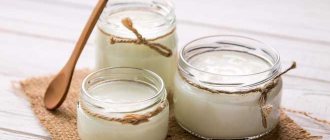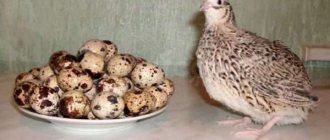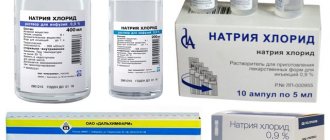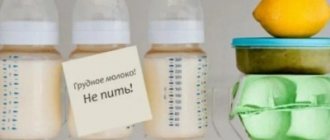In a refrigerator
The storage duration according to GOST and SanPiN is influenced by many factors:
- methods of primary processing of dairy raw materials,
- container,
- temperature regime,
- humidity,
- transportation conditions.
The humidity level should be 85-90%, and the optimal temperature should be in the range from 0 to +10 °C, depending on the type of product. Most products have short lead times due to the high risk of proliferation and exposure to various bacteria.
Pasteurized
This variety is most often found in stores. Pasteurization involves heating the liquid for a long time to 60 °C. As a result of heat treatment, pathogenic microorganisms die, while beneficial microflora and organoleptic properties are preserved.
Pasteurization at the enterprise allows you to increase the sales time to 2-3 weeks. Can be stored in vacuum packaging until the expiration date. If the seal has been broken, the container must be tightly closed and the contents consumed within 48 hours.
It is recommended to place packaged pasteurized milk on the third shelf or in the freshness zone.
UHT
Ultra-pasteurized is a milk product that has undergone heat treatment with short-term heating to 150°C and subsequent cooling to 5°C. In this case, some of the beneficial microelements are destroyed.
The shelf life of such a product is considered relatively long, it is set by the manufacturer and reaches six months, depending on the presence of various stabilizers, preservatives, and thickeners in the composition.
It can be safely placed on the refrigerator door or top shelves and stored until the date indicated on the package. It is not recommended to pour into another container and expose to sunlight.
Boiled
Boiled drinking milk retains its quality for 7 days.
Dishes that are planned to contain liquid must be pre-sterilized. Be sure to boil any product purchased from strangers. Remember that the usefulness of such a drink is significantly lower, since prolonged exposure to high temperatures destroys not only pathogens, but also protein, vitamins C and D, and makes phosphorus and calcium poorly absorbed.
Homemade
Village farm milk products are considered environmentally friendly and more valuable compared to factory-made ones.
Unfortunately, it quickly loses its freshness, so the maximum shelf life in a refrigerator is 48 hours.
It is recommended to pour into a clean jug or jar and close the lid.
Ghee
The origin of baked milk has Slavic roots. Preparation of the drink involves boiling and subsequent long, even simmering.
Does not sour longer than sterilized, can be stored in a refrigerator for up to 7-10 days.
Goat
Goat milk is less likely to cause skin and food reactions, which is why it is so loved by allergy sufferers. The unique composition is rich in important microelements and vitamins.
A fresh product that has not undergone heat treatment will last in the refrigerator for about 3 days if placed in a sterile and airtight container.
Once opened, a store-bought product will retain its beneficial properties for a week. Repeated boiling is prohibited.
Lactose-free
Lactose-free is produced using special technologies for removing or hydrolyzing lactose. Ideal for diabetics and people with lactose intolerance.
At temperatures from 0 to +6°C, opened packaging is stored for 3-4 days, closed – no more than 30 days.
Concentrated
Concentrated is the result of partial dehydration and sterilization (preservation) of raw milk. Used in cooking for making soups, sauces, desserts and baked goods. Ideal for hiking and living in the wild.
The products are easy to store, the recommended temperature varies up to +10 – 20 °C depending on the container, the storage period is 3 years.
Condensed
The shelf life of condensed milk is the same as that of concentrated products (2-3 years).
Sukhoi
Powdered milk is a soluble powder obtained after condensation and drying of raw materials. It is used for preparing various dishes, including food in kindergartens.
Low fat preserves its taste for 3 years and whole dry for 10 months. Store the diluted solution for no more than 72 hours.
Vegetable
Plant-based milk products are prepared from nuts, plant seeds, and cereals. The most famous varieties are coconut, almond, sesame, poppy, pumpkin, cedar, oat, rice, and soy milk.
Keep in the refrigerator for no more than 3 days.
Chest
According to the website of the Association of Natural Feeding Consultants (AKEB), fresh breast milk for a baby is stored from 72 hours to 8 days.
The longer it is in the refrigerator, the less vitamins and antioxidants remain in it. It is recommended to pour into a tightly closed bottle to prevent the absorption of foreign odors and to note the date and time of pumping.
Conditions and terms of storage of homemade milk
Homemade milk is a product obtained by farming , that is, by milking a domestic cow. The raw drink is filtered through cheesecloth and poured into a glass or ceramic resealable container. This product is stored for up to 2 days at a temperature of +1 to +2°C in a refrigerator or cold cellar.
Important! Raw farm products may contain pathogenic bacteria that can cause serious illness in humans. The cause may be an illness of the animal, which in private farms is not always vaccinated, as well as non-compliance with milking hygiene. It is recommended to boil fresh milk.
Boiled homemade food is stored at the same temperature as raw food . Due to the exposure of the product to high temperature, pathogens die in it and almost all vitamins disappear. The product is stored in glass or ceramic containers for up to 6 days.
In the freezer
If you want to keep your drink fresh longer, freezing will help. You can store it in the freezer in:
- Vacuum bags.
- Small plastic jars.
- Forms for ice (later used to add to coffee).
Initially, you should pour a little liquid from the container in which you plan to freeze the product. This is necessary because the contents expand and can damage the plastic. For breastfeeding, you need to prepare special containers or bags with a zipper (chicco, medela, Tommee Tippee).
Frozen storage time is 4 months.
Do not heat in a microwave oven or re-freeze. To defrost, place on refrigerator shelf until thawed.
Other types of milk
There are also other types of milk that differ from the product we are used to in taste and consistency:
- Concentrated – is a product condensed using a special technology without adding sugar. But this is not the condensed milk we are used to - concentrated milk has a different consistency and has a salty taste. It is usually sold in cans, which is why it is stored for a very long time.
- Ghee is a favorite childhood drink, attracting not only its delicate taste, but also its beige color. It is stored at a temperature of 0-8 ° C for the same amount as regular boiled food.
We recommend reading: Powdered milk: terms and conditions of storage of the product. How to check for quality.
Milk is of great value in the daily diet. And if stored correctly, it will not spoil ahead of time and will delight you with its taste and benefits. To do this, you need to take into account only 3 points: store the product in the refrigerator, choose a suitable container and process it if it is “raw”.
Store correctly and be healthy!
At room temperature
At home, at room temperature, you should not leave it open for longer than 6-10 hours, as this will lead to gradual souring.
Outside the refrigerator should be placed in a dark, cool place away from the radiator and other heating elements.
Condensed, concentrated and powdered milk can be stored at +20°C for several months.
How to prolong the freshness of milk
Boiling
Raw homemade milk is the most defenseless.
- The unprocessed product is stored for up to 24 hours at a temperature not lower than 1 °C and not higher than 20 °C.
- At room temperature this period is reduced to 10 hours.
It is advisable to sterilize raw milk to get rid of microorganisms and increase its shelf life. And you must do this if you bought bottled milk for an occasion at the market.
For proper boiling:
- Choose a pan. Glass, aluminum or steel are suitable.
- Checking for freshness. Pour the milk into a tablespoon and bring it to the flame. If it is not fresh, it will curdle immediately.
- We checked everything and made sure the product was fresh. Pour milk into the pan, put it on low heat and keep an eye on it - it will try to “escape”.
- Bring to a boil and turn off. Every minute kills vitamins and “curdles” calcium. It is this that remains like scum at the bottom.
- Then let it cool and pour into a container that has been prepared for storage. The container must be disinfected by dousing it with boiling water.
After boiling, milk will last at room temperature for a day, in the refrigerator - up to 7 days.
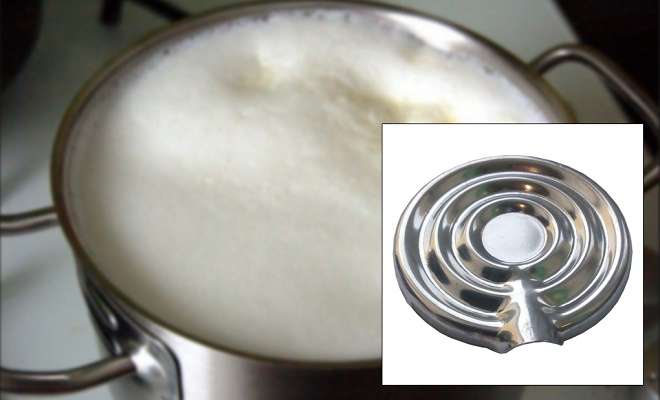
To prevent milk from running away, place an inverted saucer or a special milk “guard” - a ribbed circle with a spout - on the bottom of the saucepan.
Freezing
Some people ask: is it possible to freeze milk? Can. This increases shelf life, but loses enzymes and some vitamins. Therefore, it is better to drink what you have just bought, rather than defrosted.
The freezing process is simple:
- Pour the milk into the container you have chosen for freezing. Do not fill to the brim because the product will expand as it freezes.
- It is better to start the process with quick freezing at -22 °C.
That's all. It is better to defrost milk on the bottom shelf of the refrigerator; by evening it will be ready for use. But keep in mind that defrosted food cannot be re-frozen. So all the benefits and taste will be lost.
Frozen milk can be stored until defrosted. But we do not recommend keeping it in this form for more than 2 months.
Note to the hostess
It should be noted that after defrosting, organoleptically (taste, color, consistency) milk no longer resembles the original product.
Depending on the container
Plastic bag
Soft packaging (fin-pack, berta-pack) has a low cost and is usually used for pasteurized dairy products (Pestravka, Piskarevskoe). This is a film made of high-strength polyethylene, dense and grease-resistant, protecting from exposure to sunlight.
The shelf life is 3 weeks.
Plastic bottle
The product in a plastic bottle (Kubanskaya Burenka, Selo Zelenoe, Vkusnoteevo, Little House in the Village, Vesyliy Milkman, Prostokvashino) has a short shelf life (up to 3 weeks) due to lower tightness compared to a tetra bag and the risk of exposure to sunlight.
Can
The tin can (Shadrinskoe) is practical.
Allows canned contents to be stored for several years.
May give a slight metallic taste.
Tetrapack
Tetrapak (Bezhin Lug, Parmalat, Agusha, Frutonyanya, Semenishna, Yasny Lug) allows you to preserve the taste and is easy to use. Typically, UHT milk is produced in a box, requiring aseptic filling, which is what this type of material provides.
The product is good for an average of six months.
Glass
Glass was actively used during the Soviet era, but is now rarely found: mainly for premium and children's products (EtoLeto, Rogachev, Mozhaiskoye). It is easy to damage, and when exposed to sunlight, vitamin C is destroyed very quickly. It preserves the taste of dairy products best of all.
In such packaging, the contents have a short shelf life of 36 hours.
What determines the shelf life
How long milk will be stored depends on many factors. Everything is important here - from the production method to the storage location. This science should not be considered complicated. Learning how to store it correctly is easy, just consider the following:
- type of processing;
- packaging;
- storage conditions.
Let's look at each point in more detail.
Types of processing
The most effective way is heat treatment. This kills some of the bacteria that lead to rapid souring. According to this criterion, milk is divided into:
- Sterilized. The technology involves processing milk at a temperature of 115 °C. This eliminates microorganisms, enzymes and fungal spores. At home, sterilization of the product can be achieved by simply boiling. The longer the thermal effect occurs, the more its taste and color change.
- Pasteurized. The process is carried out at temperatures below 100 °C. This is how disinfection occurs. This type of treatment is more gentle than the previous one. Antiseptic packaging takes place in production, thanks to which no new infection of the product occurs.
- Ultra-pasteurized. This type of milk lasts the longest. Ultrapasteurization involves heating to 145 °C for several hours in a closed tank. This method is designed for extreme cases, not for everyday use.
Do you know that…
The longer milk is stored, the less nutrients it contains.
Packaging types
Packaging has a great influence on safety:
- The ideal container is glass, as it does not react with liquid. Unfortunately, nowadays glass bottles are an impractical solution for milk due to the heaviness and fragility of the material.
- Tetrapak is the closest in properties to glass containers and is recognized as the best in 2021. A huge advantage is that the product in a tetra pack can be stored outside the refrigerator before opening.
- PET bottle. When purchasing plastic bottles, you should pay attention to the opacity. To maintain the freshness of the product, avoid contact with the sun. An opaque bottle will be the best choice. But be careful with such containers. You should not store milk in it for a long time. Moreover, from PET it acquires a slight plastic taste.
- Polypack is a familiar “bag” to everyone. This container has no obvious disadvantages - it protects from sunlight and does not affect the contents. The only downside is the inconvenience of use.
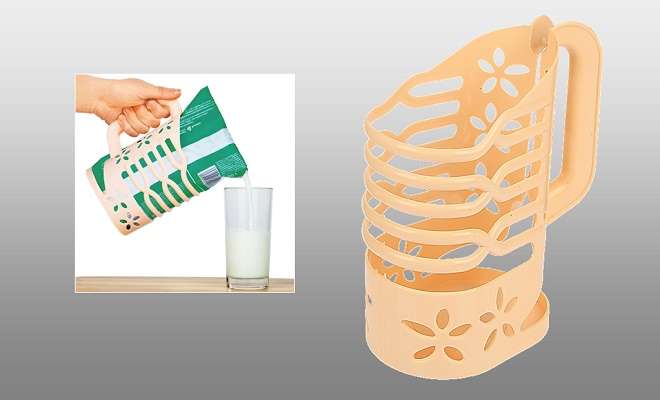
Pouring milk into another container increases the risk of it going sour. To avoid this, special stands for milk cartons are used.
Determining the delay
In order not to purchase expired goods in a supermarket, market or from hand, adhere to the following rules:
- There should be no unpleasant or strange odor (if purchased steamed or unpasteurized).
- Choose the freshest product with a recent production date (Promotions most often sell expired products).
- When buying at the market, ask the merchant for certificates, look at the sanitary conditions of the point.
- Consumer packaging must not be deformed or swollen.
- Between whole and normalized, it is preferable to choose whole selected.
General rules for storing the product
The storage of milk and other dairy products is determined by the processing method. The shortest shelf life of a raw drink is just a few days in the refrigerator. Various production technologies make it possible to extend the life of the product for up to 6 months.
The following conditions are essential for the shelf life:
- Product processing method (sterilization, pasteurization, etc.);
- Packaging (plastic bottle, bag or tetra pack);
- Storage conditions (temperature).
In order for milk to be stored as long as possible and not lose its taste and benefits, you must follow some rules:
- The product should not be kept in direct sunlight - this will cause it to lose vitamins and spoil faster;
- The most favorable temperature for the product is created on the shelves of the refrigerator - no higher than 3-4 degrees;
- The drink must be kept in an airtight container so that it does not absorb foreign odors;
- The shelf life of milk can be increased by boiling it or pasteurizing it at home.
All known milk processing methods affect the quality of the product. When heated, some of the vitamins are destroyed. However, even though raw milk contains more useful substances, drinking it is dangerous; it may also contain pathogenic bacteria. Therefore, it is better to choose something that has been processed, with a short shelf life and the maximum proportion of preserved vitamins.
How to choose good milk
When purchasing, it is important to pay attention to some features:
- Typically, fresher milk on the shelf is positioned behind packages of products that are about to expire, to encourage consumers to pick up a package of older milk;
- In stores and markets, products must be stored in refrigeration equipment;
- A bottle of milk purchased at the farmers' market must be well packaged and the lid must not be opened;
- In order to verify the quality of the product, you can request the relevant documentation from the seller;
- Goat's milk must be purchased from trusted sellers; it is expensive and is often mixed with cow's milk.
So, to summarize: to increase shelf life, milk can be frozen, simply boiled and pasteurized at home. If the product needs to be poured out of a purchased package, you will need a sterile container; you cannot pour it back into a store-bought package. Any milk is stored in the refrigerator.
You may also be interested in knowing how long cocoa powder can be stored, because it is based on milk that a nutritious, micronutrient-rich, invigorating drink is made from it, which is a natural antidepressant. High-quality milk plus high-quality cocoa powder - and you have a truly healthy drink on your table, and not a substitute for its taste.
15-30 days
When pasteurized milk can be stored for more than two weeks, it is a sign of high sanitary production standards. The cleaner the workshop, the safer the products.
Pasteurized milk comes with a shelf life of 20 days. A closed production method has been introduced here and there is equipment that ensures a high level of hygiene. The dosing area is fenced off, the air is treated with bactericidal lamps, and the packaging is disinfected with an air-peroxide mixture. Contact of milk with human hands is completely eliminated. According to European standards, this type of bottling is considered one of the highest hygienic levels.


